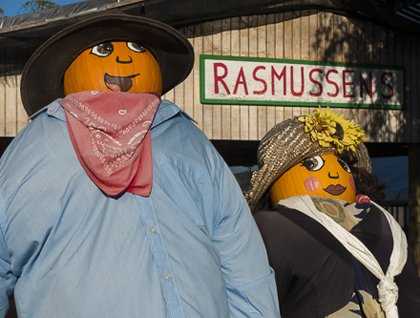We woke to a glorious day at Hood River, Oregon…brilliant sunshine and crisp autumn temperatures. We boarded coaches for the short drive up the Hood River Valley to the Rasmussen Farm for a tasting of their fruits and other farm products. Our hotel manager Erasmo Estripeaut joined us so that he could purchase a selection of pears and apples for our pleasure later on board the National Geographic Sea Bird.
Mt. Hood, at 11,245 feet is the highest mountain in Oregon; it stood sparkling with a fresh dusting of snow beyond the fruit growing lowlands. Turning 180-degrees, we could also see Mt. Adams, another composite volcano, in the state of Washington. Its summit is more than a thousand feet higher than Hood. Both mountains are a mute testimony to the violent volcanic eruptions in the not too distant past.
From the farm, we had an opportunity to roam the town of Hood River, sometimes called the wind surfing capitol. Strong westerlies often roar through the Columbia River Gorge making ideal conditions for wind surfing and kite surfing. The little community of Hood River caters to this and other outdoor pursuits, along with a nice selection of small restaurants, coffee houses, local breweries, and wine bars.
After lunch, we sailed west through the Columbia River Gorge to Cascades Locks. Here we disembarked for a visit to Multnomah Falls. At one time side streams and rivers in this area entered the Columbia River at river level; but during the ice age, the tremendous glacial Lake Missoula floods deepened the gorge faster than the side streams could keep up. This resulted in those streams now being perched high above the Columbia. In the case of Multnomah, the creek now falls 620 feet over basalt cliffs in two lovely sprays.
Once back on board, we sailed down to Bonneville Dam and entered our last lock of the trip. Emerging from the lock, we were now on the last section of free-flowing Columbia River headed for Astoria, Oregon.









